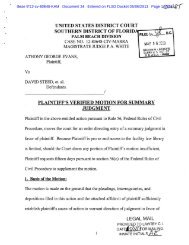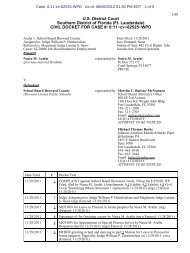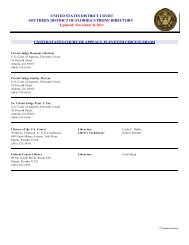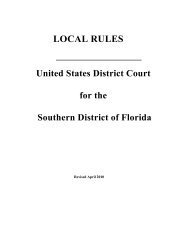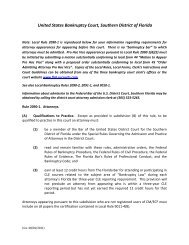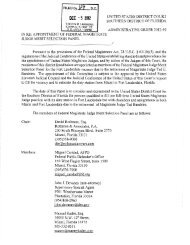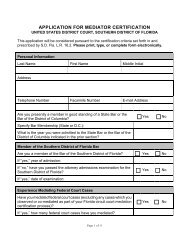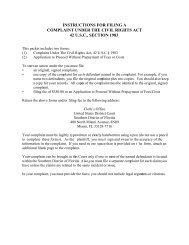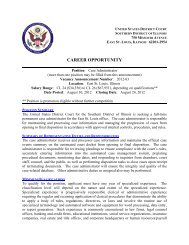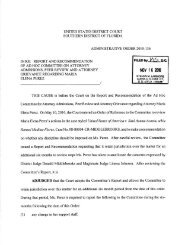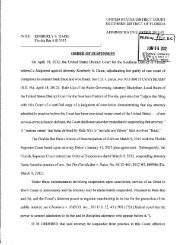JAN j 6 2010 - United States District Court
JAN j 6 2010 - United States District Court
JAN j 6 2010 - United States District Court
Create successful ePaper yourself
Turn your PDF publications into a flip-book with our unique Google optimized e-Paper software.
where substitute custodians declined to obey a COTP order to move an arrested<br />
vessel, citing Local Admiralty Rule E(10)(b) and its requirement that <strong>Court</strong><br />
permission be first obtained. Any movement of a vessel pursuant to a COTP<br />
order must not take the vessel out of the <strong>District</strong>. A corresponding change was<br />
made in Form 5, paragraph (5).<br />
Local Admiralty Rule E(ll). Section (11) is new. It addresses areas which in<br />
recent litigation in the <strong>District</strong> have called excessively for interim judicial<br />
administration. While the subject matter is covered in the rules promulgated<br />
in other districts, Section (11) differs from the approach of other districts<br />
in providing for a more positive control of expenses being incurred in<br />
connection with vessels or other property in the custody of the <strong>Court</strong>, and is<br />
designed to avoid accumulated costs being advanced for the first time well<br />
after having been incurred.<br />
Local Admiralty Rule E(12) . Section (12) is new. It addresses a situation<br />
which has arisen in the <strong>District</strong> in the past and which can be foreseen as<br />
possibly arising in the future. While the subject is not addressed in other<br />
local rules studied by any oft-cited leading cases, it was the opinion of the<br />
Advisory Committee that the area should be addressed by Local Admiralty Rule<br />
and that the provisions of Section (12) are both consistent with the general<br />
maritime laws of the <strong>United</strong> <strong>States</strong> and designed to permit efficient<br />
administration without the necessity for undue judicial intervention. As with<br />
the claims of intervenors and the allocation of deposits against custodial<br />
costs, the provisions of Section (12), in keeping with the design of these<br />
Local Admiralty Rules, are intended to be essentially self-executing, with the<br />
emphasis on the ministerial role of <strong>Court</strong> officers and services.<br />
Local Admiralty Rule E(13). Section (13) continues the provisions of former<br />
Local Rule 17(a). It follows Federal Rule of Civil Procedure 41, and addresses<br />
the necessarily greater concern for costs and expenses inherent in the in rem<br />
admiralty procedure.<br />
Local Admiralty Rule E(14). Section (14) continues the provisions of former<br />
Local Rule 13.<br />
Local Admiralty Rule E(15). Section (15) incorporates the provisions of former<br />
Local Rule 14.<br />
Local Admiralty Rule E(16) and (17). The provisions of former Local Rule 4 have<br />
been expanded to provide a standardized procedure governing sales of property,<br />
which procedure the <strong>Court</strong>, at its option, may utilize, in whole or in part,<br />
thus shortening and simplifying orders related to sales and accompanying<br />
procedures.<br />
Local Admiralty Rule E(18). Consistent with the provision of Local Admiralty<br />
Rule E(2), this section gives express notice of the distinct positions of<br />
claims pre-sale and post-sale.<br />
(<strong>2010</strong>) Amended to conform tabulation to the style used in the federal rules<br />
of procedure.<br />
Rule F£. Actions to Limit Liability<br />
134



